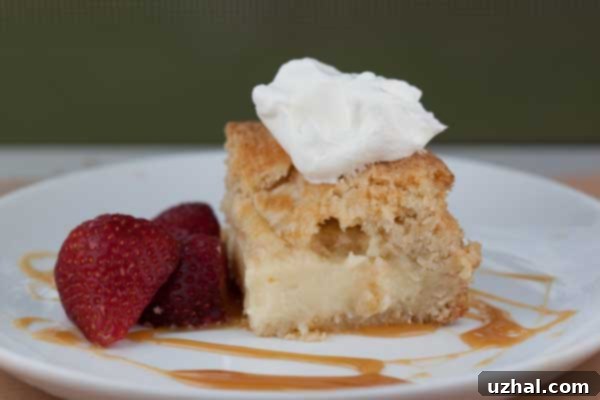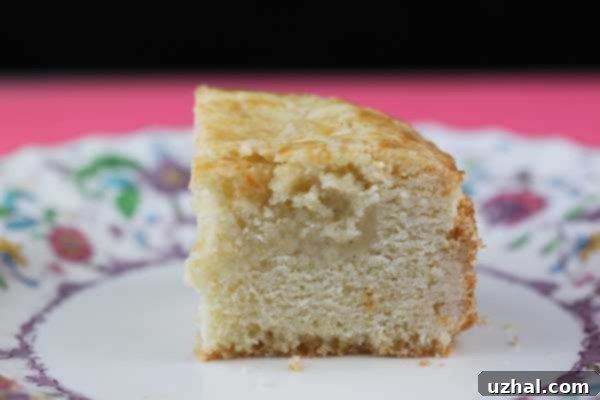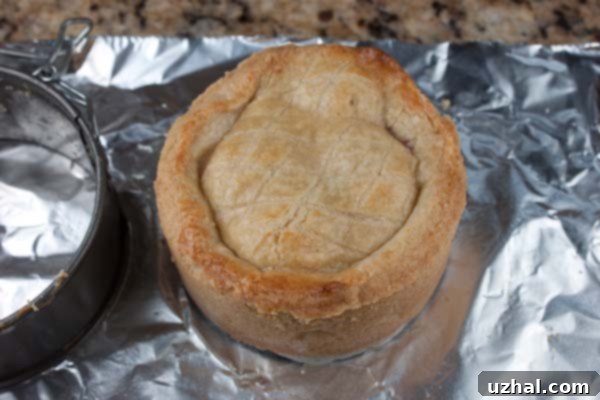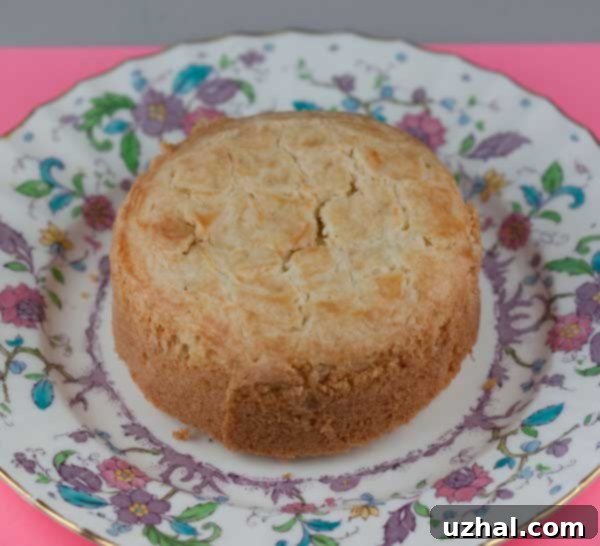Unveiling the Secrets of Gateau Basque: A Comprehensive Review of Classic Basque Cake Recipes
My culinary world expanded significantly just last week when the delightful concept of Basque cake, or “Gateau Basque,” was introduced to me. What started as a casual discovery quickly blossomed into a delightful obsession. For those yet to experience this culinary treasure, Gateau Basque is a traditional pastry originating from the Basque Country. It typically presents as a thick, round, and wonderfully dense cake, characterized by its crumbly, almost shortbread-like crust that encases a luscious filling. The heart of this pastry can vary, traditionally featuring rich fresh preserves, smooth pastry cream, or finely ground almonds, each offering a unique twist to its classic charm. Its rustic elegance and comforting flavors make it an instantly captivating dessert, and I was eager to dive deep into its creation.
Embarking on a Culinary Journey: Testing Three Distinct Basque Cake Recipes
The world of Basque cake is rich with variations, each boasting its own proponents and unique characteristics. My newfound goal became to explore these different renditions to truly understand the essence of this beloved pastry. However, with limited time and the ever-present cost of premium butter, a full-scale expedition wasn’t feasible. I decided to start with a focused exploration, selecting three distinct and highly-regarded recipes as my initial benchmark. This methodical approach allowed me to compare and contrast fundamental techniques and ingredient ratios. Furthermore, given my initial uncertainty about my proficiency with this specific cake and whether it would become a household favorite, I opted to scale down each recipe. This allowed me to bake them in charming Wilton 4 ½ inch springform pans, yielding smaller, more manageable test cakes. But fear not if you lack these petite molds; the original recipes, which I’ve linked for your convenience, are designed for standard large pans. You can either follow those full-sized instructions or adapt my scaled-down approach to fit your baking needs and preferences. This initial testing phase was not just about baking, but about learning the nuances of Gateau Basque from diverse culinary perspectives.
The Chosen Contenders: A Closer Look at the Basque Cake Recipes Tested
To provide clarity on my baking adventure, here’s a detailed list of the three Basque cake recipes I put to the test. Each was selected for specific reasons, aiming to cover a good spectrum of the traditional Gateau Basque style:
1. **Dorie Greenspan’s Gateau Basque from NPR:** Dorie Greenspan is a culinary icon known for her meticulously tested and beloved baking recipes. Her version promised a classic take, often celebrated for its approachable method.
2. **Amanda Rockman’s Basque Cake via Lottie and Doof (also on The Pastry Chef is Baking):** This recipe caught my eye due to its association with professional pastry chefs and the Culinary Institute of America, suggesting a more refined or “chef-style” approach to the Gateau Basque.
3. **Gale Gand’s Basque Cake with Cherry Preserves on Food Network:** Gale Gand is another highly respected pastry chef, and her recipe, often emphasizing fruit preserves, offered a compelling alternative to pastry cream-centric versions.
My selection was deliberate. All three boasted excellent reviews and primarily utilized common baking ingredients: regular all-purpose flour, rich butter, and granulated sugar. I consciously avoided recipes featuring almond flour for this initial phase, as I intend to dedicate an entirely separate post to those variations, delving into the distinct textures and flavors they impart. This allowed me to focus purely on the foundational “Gateau Basque” experience, ensuring a fair and comparative review based on widely accessible ingredients.
Dorie Greenspan’s Gateau Basque: A Cookie Lover’s Approach to Cake
My first foray into the world of Basque cake began with Dorie Greenspan’s highly acclaimed recipe. What immediately set Dorie’s method apart from many others was the consistency of her “batter.” Unlike the softer, pipeable batters often associated with Gateau Basque, Dorie’s recipe yields a robust, pliable dough. This dough is substantial enough to be rolled out into circles and then pressed firmly into the pan to form both the base and the top crust, effectively encasing the filling. As someone who frequently bakes cookies, this tactile process of rolling and shaping dough felt inherently more familiar and less intimidating than the precision required for piping soft dough from a pastry bag. It seemed like an inviting entry point into this new baking endeavor, at least initially.
Following Dorie’s instructions, I prepared the dough, scaling the recipe down by half to fit my smaller springform pans. For the filling, I decided on a classic combination: a generous layer of my favorite basic pastry cream complemented by a vibrant homemade cherry preserves. This dual-filling approach promised a delightful balance of creamy and tart flavors. During assembly, however, I veered slightly off the traditional path. I built the edges of the dough higher than perhaps intended, resulting in a baked cake that, while delicious, bore a striking resemblance to an Italian “torta rustica” with its towering sides. Despite this aesthetic deviation, the resulting “cake” was undeniably delicious. I use quotation marks around “cake” because its texture leaned more towards a rich pastry, a delightful hybrid somewhere between a dense cake and a tender, crumbly shortbread cookie. The brown sugar in Dorie’s recipe also contributed a deep, caramelized flavor that was utterly irresistible, making this first attempt a resounding success in terms of taste and a valuable learning experience in terms of technique.
The Culinary Institute of America’s Influence: A Rich and Indulgent Basque Cake
My second baking experiment featured a recipe prominently shared on the blogs Lottie and Doof and The Pastry Chef’s Baking. This particular Gateau Basque recipe is credited to the prestigious Culinary Institute of America (CIA), which immediately piqued my interest. Its defining characteristic is a notably high ratio of butter and sugar to other ingredients, a hallmark of many professional pastry preparations designed for exceptional richness. To illustrate, alongside 3 eggs, this recipe calls for a generous 16 oz (448 grams) of butter, 16 oz (448 grams) of sugar, and 13 oz (364 grams) of flour. The resulting cake is, as expected, incredibly rich and decadent! While its intensity might suggest smaller portions, this richness is actually a virtue, allowing for delicate servings that can be beautifully complemented by lighter sauces, fresh fruits, or a dollop of whipped cream, creating a balanced dessert experience.
I meticulously scaled this substantial recipe down to one-third of its original quantity, which still provided ample batter for two of my 4 ½ inch test cakes. Unlike Dorie’s rollable dough, this batter possessed a softer consistency, perfectly suited for piping into the springform pans as instructed. For the filling, I opted solely for classic pastry cream, excluding any jam or fruit, to truly appreciate the cake’s intrinsic flavor. My initial piping technique involved creating a circular base layer of batter, then piping an outer ring to form a well for the cream, which was then carefully placed in the center. As I gained more confidence and experience with subsequent cakes (and there were many!), I discovered that piling the pastry cream filling a little higher yielded an even better result, ensuring a more generous and satisfying center in the finished cake.
Once the pastry cream was nestled within its batter fortress, the cake was topped with a final layer of piped dough and brushed with an egg wash to achieve that signature golden sheen. I baked it for approximately 45 minutes at 325 degrees F. The moment it emerged from the oven, its perfectly puffed, golden-brown crust was truly gorgeous and a testament to the recipe’s promise.
However, a minor disappointment surfaced as the cake cooled: a slight indent formed in the center. Initially, this bothered me, but a closer inspection of professional examples quickly alleviated my concerns. Pictures of the Basque cake served at renowned establishments like The Bristol reveal a similar gentle depression in their beautifully presented cakes, as do the miniatures crafted by the chef at The Pastry Chef is Blogging. This indicated that the “sinking” wasn’t a flaw but rather a characteristic of this rich pastry, perhaps even a desirable feature creating a natural well for additional garnishes. Despite this minor aesthetic nuance, the cake itself was fantastically delicious, boasting an incredibly tender crumb and a luxurious, buttery flavor that made it an instant favorite.
To highlight its elegance, I meticulously cut each 4 ½ inch cake into four equal pieces, ensuring a perfect serving size. Each segment was then garnished with a generous dollop of freshly whipped cream and a scattering of seasonal fresh berries. This simple presentation beautifully balanced the richness of the cake, adding a layer of freshness and visual appeal, elevating the entire dessert experience.

Gale Gand’s Basque Cake: A Lighter, More Cake-Like Alternative
Having thoroughly enjoyed both Dorie Greenspan’s pastry-like rendition and the rich, indulgent CIA-inspired cake, I approached Gale Gand’s Basque cake recipe with eager anticipation and a healthy dose of curiosity. This third recipe presented a distinctly different profile. Unlike the pastry cream focus of the previous two, Gale Gand’s version primarily features a filling of fruit preserves and is notably flavored with almond extract, adding another layer of aromatic complexity. A key difference lay in the ingredient ratios. While similar to the CIA recipe in calling for 3 eggs, Gale’s recipe significantly reduces the fat and sugar content: only 8 ounces of butter compared to 16, 9.3 ounces of sugar instead of 16, and 11 ounces of cake flour versus 13 ounces of all-purpose. This leaner ingredient list led me to a clear prediction: this cake, with considerably less butter and sugar, would be less prone to sinking during cooling. This presented an exciting opportunity to explore a potentially more “cake-like” Gateau Basque.
And my prediction proved correct! Upon cooling, Gale Gand’s Basque cake maintained its proud dome, showing no signs of the gentle sinkage observed in the richer CIA version. The anticipation to cut into this cake was immense, eager to discover the impact of its unique ingredient ratios.
Once completely cool, I carefully sliced the cake in half to inspect its interior. The texture was indeed noticeably lighter than the CIA recipe, exhibiting a very tight, even crumb that felt much more akin to a traditional cake than a rich pastry. Interestingly, I observed that some of the pastry cream filling appeared to have diffused into the surrounding batter during baking, suggesting a potential interaction between the components. While it might have been my imagination, it seemed as though there was slightly less distinct cream in the very middle than I had intended. This insight immediately prompted a mental note for future attempts.

Consequently, for the next round of baking Gale Gand’s recipe, I made a conscious decision to be more generous with the filling, aiming to incorporate loads more pastry cream. This adjustment would ensure a more prominent and satisfying creamy center, complementing the cake’s unique, lighter crumb structure. This iterative process of baking, observing, and refining is a core part of truly mastering any recipe, especially when exploring variations of a classic like Gateau Basque.
Comparing the Triumvirate: A Final Review of Basque Cake Recipes
After a delightful and instructive journey through three distinct Gateau Basque recipes, it’s time to consolidate my findings and offer a comparative review to guide your own baking endeavors:
Dorie Greenspan’s Gateau Basque: The Rustic Pastry with Brown Sugar Charm
Dorie’s version stood out for its unparalleled convenience and the wonderful depth of flavor imparted by the brown sugar. Its texture leaned decidedly towards a rustic pastry rather than a soft cake, characterized by a delightful crustiness that truly enhanced the eating experience. I personally found that the fruit filling alone offered a more pronounced and satisfying flavor profile than when combined with cream, allowing the bright notes of the preserves to shine. We absolutely adored Dorie’s Gateau Basque, and it’s certainly a recipe I plan to revisit. Next time, I’ll ensure I employ the proper shaping technique to achieve its classic, refined appearance.
The CIA/Bristol Recipe: The Indulgent, Crowd-Pleasing Delight
The CIA/Bristol recipe quickly became a favorite for its sheer indulgence and sophisticated appeal, especially for entertaining. My husband, Todd, particularly favored its rich, buttery qualities. I wouldn’t hesitate to prepare this impressive Gateau Basque for guests, confident in its ability to impress. I’m also inspired to acquire some small pastry rings to experiment with even smaller cakes, emulating the elegant miniatures served at The Bristol. The initial concern about the cake sinking during cooling has completely dissipated; it’s less a flaw and more a charming characteristic that creates a perfect little well for fresh fruit or a dollop of cream. I did observe that piling the pastry cream filling a little higher during assembly helped mitigate the degree of sinkage, resulting in a slightly more domed final product.
Gale Gand’s Basque Cake: The Lighter, Cake-Like Contender
While the other two were undoubtedly delicious, Gale Gand’s Gateau Basque emerged as my personal favorite. Its texture was distinctly lighter and more traditionally “cake-like,” with a tight, even crumb that was both pleasing and substantial. However, it’s worth noting that some individuals might find this version a bit on the drier side due to its lower fat content. Its unique texture makes it particularly adept at soaking up the luscious liquid from jam or preserves, which enhances its overall moisture and flavor. To me, it evoked the comforting density of a refined pound cake. It’s plausible that when baked in a larger pan, the increased volume might contribute to a more consistently moist crumb throughout.
For those eager to try the CIA recipe, I’ve included my adjusted version below, scaled down to one-third of the original and baked at 325°F for 45 minutes. For the filling, a half batch of my go-to basic pastry cream works absolutely perfectly, providing the ideal richness and consistency.
A surprising and practical discovery during my tests was how well the CIA recipe, specifically when filled with the basic pastry cream I recommend, stood up to freezing. Unlike some pastry creams that tend to break down or become grainy after freezing and thawing (especially those made with cornstarch), this particular cream maintained its smooth texture beautifully. This success might be attributed to the flour used in this pastry cream recipe, which could act as a stabilizer, preventing the usual degradation. Whatever the scientific explanation, I was delighted with the taste and texture of the CIA cake after it had been frozen and thawed, making it an excellent option for make-ahead dessert planning.
I genuinely encourage you to try these incredible Basque cake recipes. Should you embark on this delicious journey and have any questions or insights, please don’t hesitate to email me! Your feedback and experiences are always welcome. As for my next baking adventure, I’m eagerly anticipating moving on to explore the almond flour versions of Gateau Basque, ready to uncover new textures and flavors.
- Malt Chocolate Chip Cookies
- Whole Wheat Chocolate Chunk Banana Bread
- Dorie’s Cookies Not Quite Newest Chocolate Chip Cookies
- Lemon Tart
- Frosting Made With Cake Mix
Recipe

Basque Cakes
Cookie Madness
Pin Recipe
Ingredients
- 1 cup plus 1 tablespoon cake flour 125 grams
- ½ teaspoon plus a pinch of baking powder or eyeball ⅔ of a teaspoon
- ¼ teaspoon of salt
- ⅔ cup unsalted butter cool room temperature (150 grams) — butter should be about 62F
- ¾ cup granulated sugar 150 grams
- 1 large egg room temperature
- ½ teaspoon vanilla extract
- Lightly beaten egg mixed with a splash of milk for brushing
- ⅔ to 1 cup of basic pastry cream cold
Instructions
-
Preheat the oven to 325 degrees F. Grease two 4 ½ inch springform pans with shortening and dust with flour.
-
Sift the flour, salt, and baking powder together and set aside (or just mix them together well).
-
With a handheld electric mixer, beat the butter until creamy. Add the sugar and beat until light and fluffy. Using low speed, add the egg, then increase mixer speed and beat for about a minute, scraping sides of bowl; beat in the vanilla.
-
Fold the dry ingredients into the butter mixture with a heavy duty scraper. A soft dough should form. Scrape the dough into a pastry bag. Pipe a circle of dough over the bottom of each pan, then pipe an outer circle on top of that circle to contain the cream.
-
Put a large scoop of pastry cream in the center, making sure it doesn’t touch the walls of the pan. Try to scoop it higher than the outer circle.
-
Carefully pipe remaining batter over the mount of pastry cream. Don’t build up the sides, just do the best you can to cover the pastry cream so that it mounds in the center.
-
Brush tops owith a mixture of beaten egg and milk. Set on a rimmed baking sheet and bake for about 45 minutes at 325 until tops are golden brown and cakes appear set. Let cool for about 25 minutes in the pan, then carefully remove the rings and let cool completely.
-
At this point, you can chill the cakes or serve them at room temperature.
Notes
If your preference leans towards a less rich, softer, and more traditional cake-like texture for your Basque cake, simply follow the instructions as written above but adjust the ingredient amounts to these specifications: 74 grams of butter, 86 grams of sugar, 1 large egg, ½ teaspoon of vanilla extract, 102 grams of all-purpose flour, and approximately ⅓ of a teaspoon (eyeball it) of baking powder. Proceed with the steps as directed. The resulting batter will be slightly softer and you’ll have a bit less volume, but it will yield a wonderful, lighter cake.
